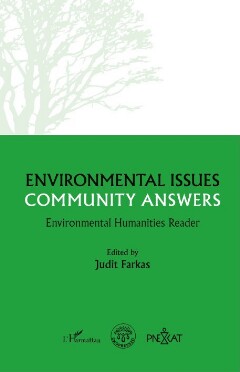Page 105 [105]
FUNDAMENTAL CHALLENGES OF ENVIRONMENTAL LAW 103
were already able to grant certain rights to the fetus in the womb, so that in legal
terms we can speak of the present generation’ from the moment of conception, and
thus distinguish it from future generations who have not yet been conceived. But
for the latter we cannot grant "rights.
Specificities of environmental law
In general, the role of the norms that make up the legal system should not be
underestimated, but neither should it be over-emphasised. Law can effectively take
into account short-term, individual interests and can react and deal with problems
that arise during economic activity relatively quickly, even if they do lead to serious
crises from time to time. However, it has much more difficulty in dealing with
more complex social, cultural and other challenges. Of course, other norms (moral
norms, religious precepts, rules of etiquette, fashion, etc.) also influence the
functioning of a society, but legal norms form a hierarchical system. Within this
system, environmental law emerged as a specific field of regulation in the second
half of the 1960s and is still popularly referred to as ‘a cross-cutting branch of law’
today.° This specific area of law is therefore relatively young and has been actively
developing in recent years, not only in terms of the number of laws (both national
and international) but also in terms of doctrine.
The situation is particularly difficult in the field of environmental law, where,
in addition to the problems which characterize legal regulation in general (the
constant increase in the number of laws, the complexity and constant changes in
the rules, the ‘casuistic nature of the legal system, the bureaucratic nature of
enforcement, the judiciary’s heavy workload, etc.), there are a number of specific
problems which make the development of effective legislation almost impossible:
a) the boundaries of environmental law are difficult to draw (actually, the entire
legal system should be permeated by environmental considerations and
requirements);
b) a comprehensive and integrated approach (‘holistic approach’) is needed, as
opposed to traditional sectoral regulation;
c) by its very nature, legislation is often only able to respond to changing
circumstances ex post facto, while risks are increasing;
d) human activity affects all environmental elements, so that environmental
impacts do not occur in isolation but rather are ‘cumulative’, and pollution
can ‘migrate’ from one environmental element to another;
e) the complexity of the problems makes it difficult to predict the medium and
long-term environmental impacts of human activities;
f) these impacts can be delayed in space and time, making it difficult to prove
liability;
g) tackling most of the challenges (e.g., building waste management systems
and improving air and water quality) properly involves long-term and costly
decisions, which require political will and adequate capacity (in particular,
substantial capital for investment);
° Initially, it was called the law of nature protection’ and later the law of environmental protection,
but the subject of regulation has since been significantly narrowed down.

